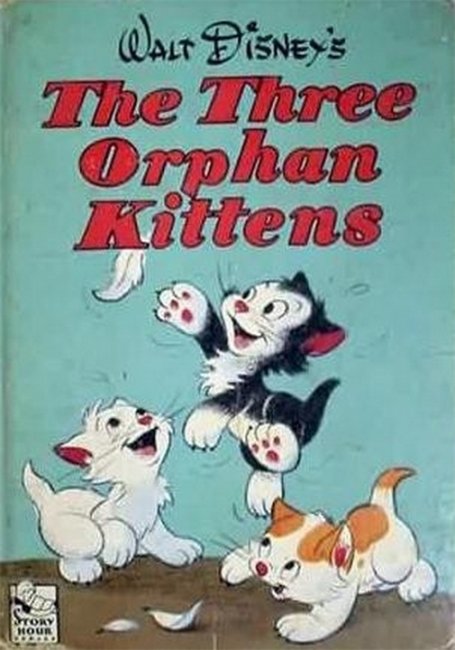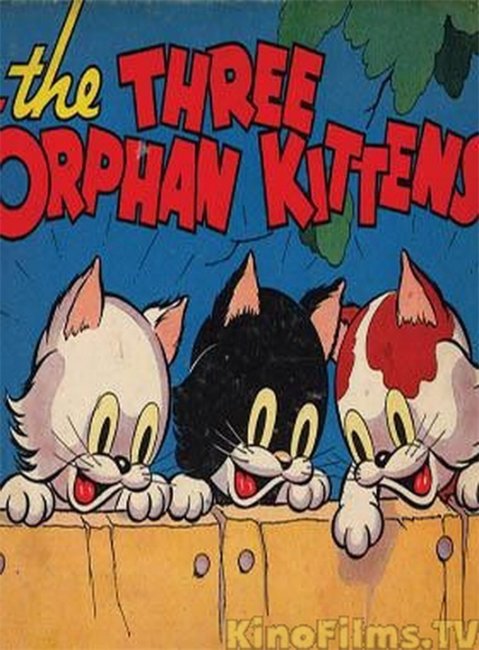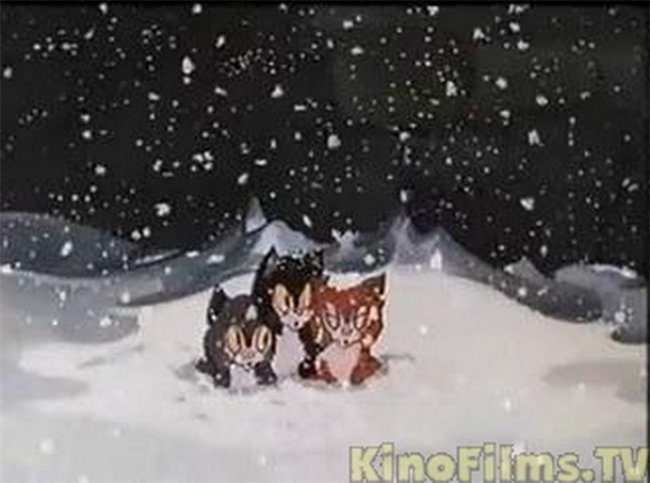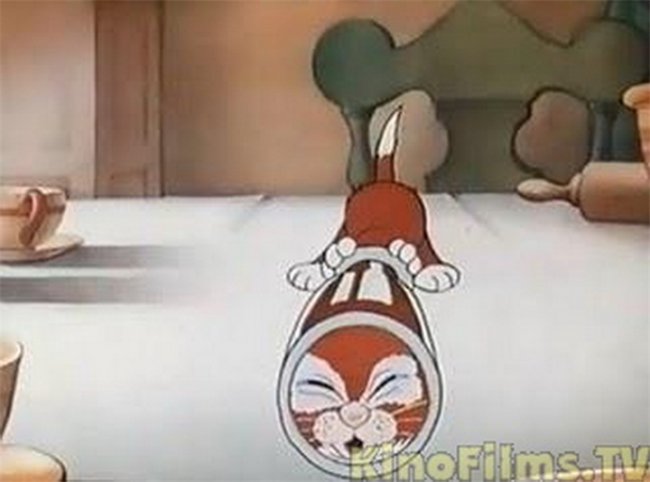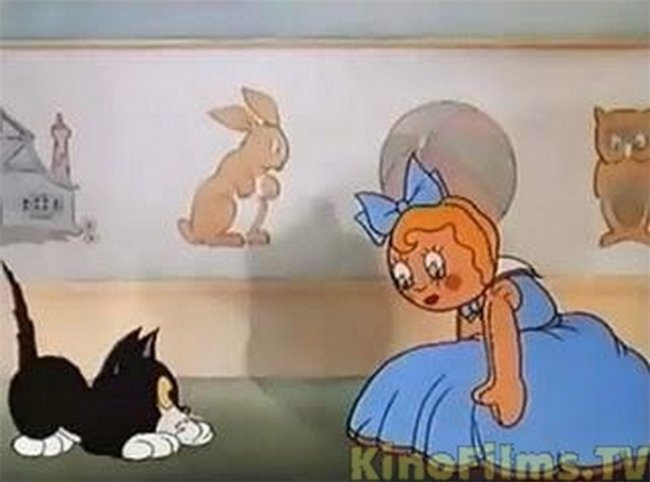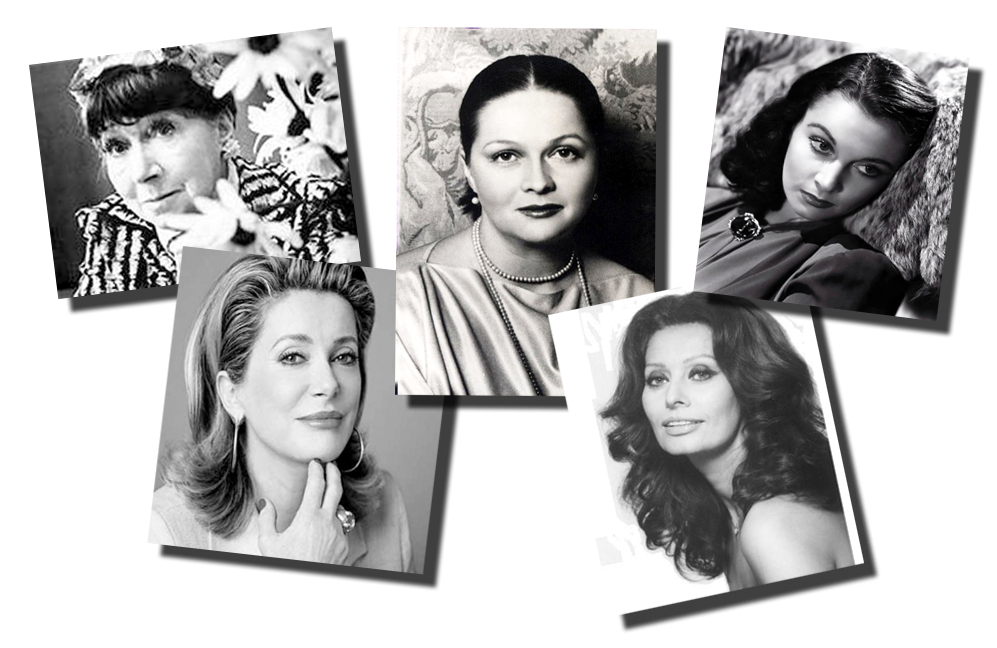ОСКАР. 1936 Лучший корот. анимац. фильм. Три котенка беспризорника (Three Orphan Kittens) - Трейлеры

Three Orphan Kittens is a 1935 animated short film in the Silly Symphonies series produced by Walt Disney Productions. It was the winner of the 1935 Academy Award for Best Short Subject (Cartoons). It was followed in 1936 by a sequel, More Kittens.
ОСКАР. 1936 Лучший корот. анимац. фильм. Три котенка беспризорника (Three Orphan Kittens)
The film tells the story of three kittens (one black, one orange, and one gray) and their adventures in a house. It begins with the kittens left out in the snow. They then notice the house nearby and enter it for shelter. They arrive at its kitchen, and begin to play there after the house's African-American housekeeper (possibly a prototype version of Mammy Two-Shoes) has finished preparing a meal. After more playing in various areas of the house, the film switches its focus to one particular kitten (the black one), who is chasing a feather and eventually ends up on a piano keyboard. The kitten starts to play with the feather walking down the piano keyboard and the feather lands on the 'on' switch with the kitten presses and the then-revealed pianola begins to play, ironically it is playing a variation of "Kitten On The Keys" a song composed by Zez Confrey in 1921. The other two kittens (both orange and grey respectively) rejoin the first. When the pianola finishes its song, the kittens leave it and are caught by the housekeeper. As she prepares to throw them out, she is stopped by a little girl, who decides to adopt the kittens.
ОСКАР. 1936 Лучший корот. анимац. фильм. Три котенка беспризорника (Three Orphan Kittens)
The film was produced as an entry in Disney's Silly Symphonies series. At the time, the Symphonies were being used as a vehicle to test the techniques which would be used in Snow White and the Seven Dwarfs and to provide an informal on-the-job training program to prepare artists for the elaborate scenes that would be included in the studio's feature-length productions. As such, the films were intended to focus on the characters, which were intended to be cute, rather than a particularly developed narrative. It was directed by David Hand, who would later direct Snow White, and animated by Ken Anderson. Like all Silly Symphonies made after 1932, it was produced in three-strip Technicolor. The film was copyrighted on November 20, 1935, nearly a month after its release.
The film was originally released theatrically in the United States on October 26, 1935. In 1937, it was re-released as part of the Academy Award Review of Walt Disney Cartoons, along with four other Academy Award-winning Disney shorts. Following that, it was not released again until 1993, when it appeared in a compilation videocassette of Award-winning Disney shorts entitled How the Best Was Won. It has also been found on VHS tapes of Dumbo, along with Father Noah's Ark and The Practical Pig. Most recently, it was released to DVD in 2006 as part of the Walt Disney Treasures compilation, More Silly Symphonies.
The original version of Three Orphan Kittens contains a scene in which one of the kittens encounter a doll that, when flipped, becomes a stereotypical African-American girl, which shouts "Mammy!" as the kitten approaches it. In the 1950s and 1960s, when Disney began censoring their cartoons before they were broadcast on television, the scene was removed from the film. The film appeared uncensored, firstly on the VHS release of Dumbo, then on 2006 DVD More Silly Symphonies, where it was placed in a section entitled "From the Vault" along with other cartoons featuring stereotypes, which was prefaced with an introduction by Leonard Maltin.
Понравилось:
Автор: Арсений
Комментариев: 0
Надо знать.
Биография Юлии Проскуряковой
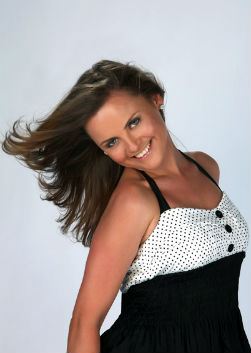
Смотреть фото Биография Юлии Проскуряковой Юлия Павловна Проскурякова – известная певица и киноактриса. Карьеру на телевидении она начинала с передач «Стань звездой» и «Народный артист». Но настоящей известности Юлия ...
→ Подробнее:)

Мы в соц. сетях
Актёры и режиссёры
Разместить рекламу
Сегодня
«Всё о Шоу Бизнесе» - самые популярные новости кино.
Начнем с того, что на сайте общаются сотни людей, разных религий и взглядов, и все они являются полноправными посетителями нашего сайта, поэтому если мы хотим чтобы это сообщество людей функционировало нам и необходимы правила.
Мы настоятельно рекомендуем прочитать настоящие правила, это займет у вас всего минут пять, но сбережет нам и вам время и поможет сделать сайт более интересным и организованным. Начнем с того, что на нашем сайте нужно вести себя уважительно ко всем посетителям сайта.
Не надо оскорблений по отношению к участникам, это всегда лишнее.
Лучшие посты
Недавние посты
Сегодня в топе



